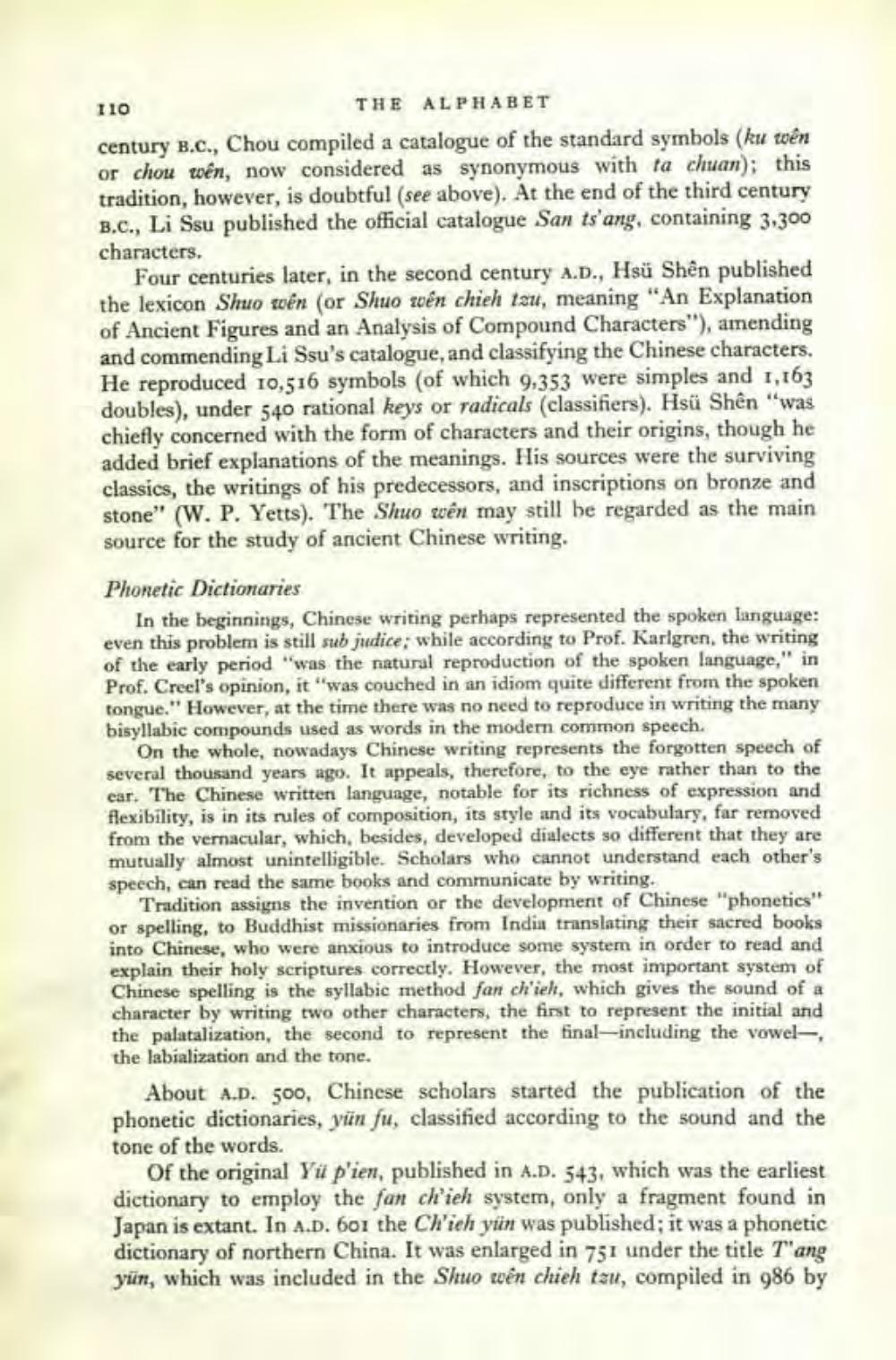________________
THE ALPHABET
century B.C., Chou compiled a catalogue of the standard symbols (ku wên or chou wên, now considered as synonymous with ta chuan); this tradition, however, is doubtful (see above). At the end of the third century B.C., Li Ssu published the official catalogue San ts'ang, containing 3,300 characters.
110
Four centuries later, in the second century A.D., Hsü Shên published the lexicon Shuo wên (or Shuo wên chieh tau, meaning "An Explanation of Ancient Figures and an Analysis of Compound Characters"), amending and commending Li Ssu's catalogue, and classifying the Chinese characters. He reproduced 10,516 symbols (of which 9,353 were simples and 1,163 doubles), under 540 rational keys or radicals (classifiers). Hsü Shên "was chiefly concerned with the form of characters and their origins, though he added brief explanations of the meanings. His sources were the surviving classics, the writings of his predecessors, and inscriptions on bronze and stone" (W. P. Yetts). The Shuo wên may still be regarded as the main source for the study of ancient Chinese writing.
Phonetic Dictionaries
In the beginnings, Chinese writing perhaps represented the spoken language: even this problem is still sub judice; while according to Prof. Karlgren, the writing of the early period "was the natural reproduction of the spoken language," in Prof. Creel's opinion, it "was couched in an idiom quite different from the spoken tongue." However, at the time there was no need to reproduce in writing the many bisyllabic compounds used as words in the modern common speech.
On the whole, nowadays Chinese writing represents the forgotten speech of several thousand years ago. It appeals, therefore, to the eye rather than to the ear. The Chinese written language, notable for its richness of expression and flexibility, is in its rules of composition, its style and its vocabulary, far removed from the vernacular, which, besides, developed dialects so different that they are mutually almost unintelligible. Scholars who cannot understand each other's speech, can read the same books and communicate by writing.
Tradition assigns the invention or the development of Chinese "phonetics" or spelling, to Buddhist missionaries from India translating their sacred books into Chinese, who were anxious to introduce some system in order to read and explain their holy scriptures correctly. However, the most important system of Chinese spelling is the syllabic method fan ch'ieh, which gives the sound of a character by writing two other characters, the first to represent the initial and the palatalization, the second to represent the final-including the vowel-, the labialization and the tone.
About A.D. 500, Chinese scholars started the publication of the phonetic dictionaries, yün fu, classified according to the sound and the tone of the words.
Of the original Yi p'ien, published in A.D. 543, which was the earliest dictionary to employ the fan ch'ieh system, only a fragment found in Japan is extant. In A.D. 601 the Ch'ich yün was published; it was a phonetic dictionary of northern China. It was enlarged in 751 under the title Tang yun, which was included in the Shuo wên chieh tzu, compiled in 986 by




